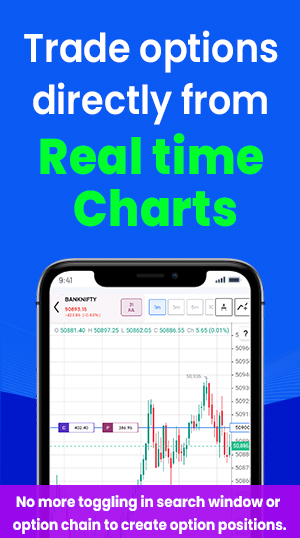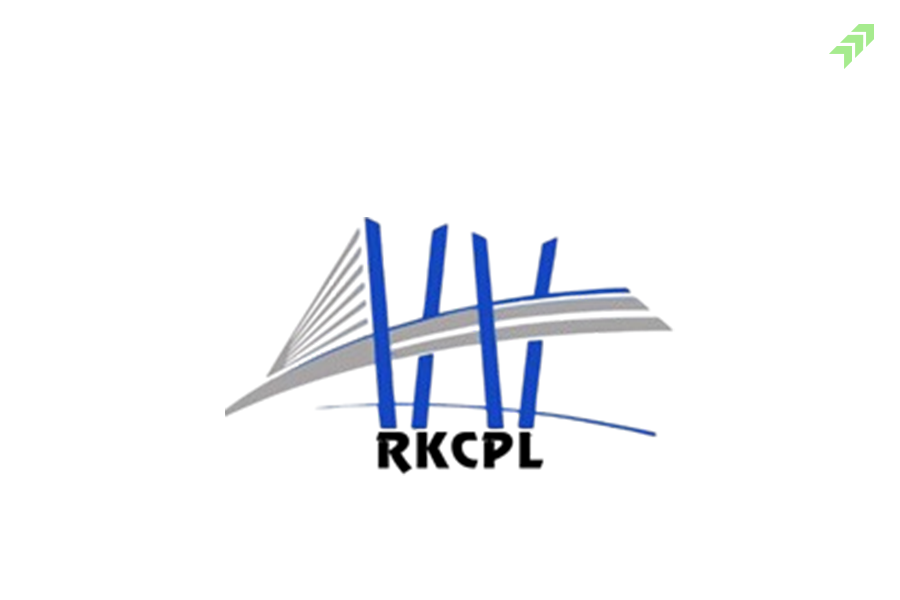The stock market is the place where you can find unlimited companies listed from different sectors and industries. Traders pick the stock using technical analysis and some other parameters, but for investing you should find the stock that is undervalued.
Also Read: Benefits of Investing in the Stock Market: Advantages of Share Market
Picking any stock randomly at any level or any price is not a wise decision. Stocks trading at the higher valuation don’t have potential to move significantly compared to an undervalued stock. High valuation stocks can fall down or correct due to traders profit booking correction. Hence, identify the undervalued stock that has higher possibility to give return.
To find the undervalued stocks you have to compare the stock price of different companies with valuation ratios and other factors like earning capability, return on fund invested etc. You can use various factors, but we have discussed here the best way to find undervalued stocks.
What Does Undervalued Stock Mean?
Intrinsic value is the actual or basic value of share price of a company or you can say it is the minimum valuation that a company deserves. If stock price of company is trading below its intrinsic value, then it is considered the share price is undervalued.
Many times either due to fundamental reasons or poor financial condition of the company, the share price of the company trade below its intrinsic value. The company is not performing well as per the expectations or running into the loss or operating or net profit margins is very thin.
However, despite all these things running well, the stock price trades below its intrinsic value, you can invest in such undervalued stocks that will recover or move higher with the improvement in the financial growth and other fundamental factors of the company.
Also Read: Difference Between Fundamental Analysis and Technical Analysis
To compare the overvalued or undervalued stocks, you can use certain parameters like operating profit margins, net profit margins. Moreover, you can also compare the current market price of the stock with book value and enterprise value or with EBITDA of the company.
Apart from that profit margins, debit and equity or liquidity ratio of the company are the popular ratios and parameters that can used to know if a stock is undervalued or overvalued.
How to Know if a Stock is Undervalued or Overvalued?
To know if the stock price is undervalued or overvalued and compare with other listed companies you can find below the top ten best ratios and factors mostly used in the stock market analysis.
Also Read: What to Research & Analyse Before Buying a Stock of a Company
10 Best Ways to Find Undervalued Stocks:
-
Price-to-Earnings Ratio (P/E)
The ratios of price to the net earnings is very common and most popular factor most widely used to compare if valuation of share of listed companies. P/E ratio is calculated by dividing the current market price of share with the earnings per share (EPS). While you can find out the EPS by dividing the TTM net profit of the company by total number of outstanding equity shares.
And when you calculate the P/E ratios of the company, you can compare the same with industry P/E or with other listed peer group companies. If it is trading below the industry P/E of less than its listed peers, then it is considered an undervalued stock. If you find such undervalued stock you can buy at the lower levels and wait to justify its valuation.
Also Read: Golden Rules for Trading in Stock Market: Top 10 Basic Rules
-
Price-to-Book Ratio (P/B)
Price to book value is another popular valuation ratio you can use to find the undervalued stock. It the share price of a company is running below its book value, and then it is considered undervalued. To find the price to book value, divide the last trading share price of the company with its book value. And to calculate the book value divides the total assets after deducting liabilities with total number of outstanding shares.
Also Read: Golden Rules for Trading in Stock Market: Top 10 Basic Rules
However, most of the share price of most of the listed companies’ trades above the book value but you should consider this P/B ratio when you evaluate the stocks of the financial companies or banks. If share price of these companies is trading below P/B ratio means the stock is undervalued. The P/B ratio is more than 1,it means the share price of the company is overvalued.
-
Return-on-Equity (ROE)
Return on equity is another useful valuation ratio to evaluate the stock price of a company. To compute the return on equity, simply divide the net profit of the TTM with equity shareholders fund. The value comes in percentage term and high return on equity ratio shows the company is earning the higher amount of profits on funds invested through equity capital in the company.
Also Read: Trading or Investing Which is Better and More Profitable
You can use this ratio to compare with its peer group companies, if ROE is high and the stock price of the company is low compared to its peer, and then it is considered as the undervalued stock. A company with a high ROE has a better capability to earn profits for its stakeholders, and if traded at a lower valuation, you can add such stock to your portfolio.
-
Price-to-Dividend yield
Dividend is that portion of net profit of a company that is distributed among the equity shareholders whenever a listed company declare its financial results, that is usually on every quarter. Divided on the face of each share, and paid directly to the shareholders as per their holdings in the company.
To know how much rate of return is earned through dividend, you have to calculate the dividend yield. Dividend yield can be calculated by dividing the current market price of share of the company with total dividend paid by the company in a financial year.
The dividend yield is represented in percentage terms, higher the dividend yield means the stock is undervalued. You can also use to compare this dividend yield with average dividend yield for the index, if divined yield is high, it means the stock price of that company is high or overvalued. However, few investors used to buy company’s stock with high dividend yield.
-
Debt-Equity Ratio
The debt-to-equity ratio does not exactly tell whether the stock is overvalued or undervalued, instead, it shows the total debt of the company against the total equity. Higher the debt-equity means company has borrowed or taken a loan in a higher amount and the equity fund is less used, which could cost to the company in terms of high-interest payouts, reducing the net profit of the company.
However, a lower debt-to-equity ratio doesn’t mean the stock is overvalued. But you can use this ratio to compare with competitors and a better debt-to-ratio means the company is using more of its funds from equity shareholders and having better profit margins. And while liquidating the company equity shareholder will have higher chances of getting their holdings.
-
Current Ratio
The current ratio shows the ability of the company to measure the payoff of its debts that can be simply calculated by dividing the assets by liabilities. The higher the current ratio means, that the company is more capable of paying off its liabilities by liquidating its assets. It is considered 1 and lower or higher than this can be used to compare with peer group companies.
Though, it is not used to know if the stock is overvalued or undervalued but helps to know the company is in better position to liquidate. And company with a better current ratio can also considered buying if available at the normal valuations.
-
Price-Earnings to Growth Ratio (PEG)
Price-earnings to Growth Ratio are the price-to-earnings (P/E) ratio adjusted to growth. It can be calculated by dividing the P/E ratio with the earnings growth rate of the company. A high PEG ratio but less than the average earnings, indicates the share price of the company is overvalued.
Conversely, low price-earnings to growth ratio indicates the stock price of the company is undervalued, as the market is discounting the long-term growth potential of the company. A overvalued stock is considered when PEG ratio of the company is high or below average earnings.
Also Read: Things to Consider Before Buying Stocks for Long Term: 10 points
-
Price-to-earnings yield
Price-to-earnings yield is the opposite of the Price-to-earnings ratio (P/E). Instead of price per share by earnings, Price-to-Earnings yield is calculated by dividing the EPS by the price per share. And as per the traders or investors, when bond yield, (the average rate of interest earned on a bond issued by the central government) is higher than earnings yield, then it is considered that the stock is overvalued.
-
Return on Capital Employed (ROCE)
The rate of return on the total amount of capital invested in the company is another parameter you can use while finding undervalued stocks. It is the total amount of profit generated from the total assets and when ROCE is more than the cost of capital it is usually considered the undervalued stock. You can use the same to compare with the peer group, and high ROCE means better efficiency in utilizing the capital invested in the company.
-
Price to Free Cash Flow Ratio
Cash flow is the actual amount of money or cash generated by the company through its business operations. A company with healthy cash flow or receiving money every month than its payment shows the ability of investors to pay a lower cost for an increased earning potential.
You can use the cash flow with price and if the ratio is less than 10, then you can consider the stock price of the company as undervalued. Free cash flow of the means, company is capable of maintaining the necessary capital expenditure to expand its asset base.
How to Find Undervalued Stocks in India?
The criteria to find the undervalued stock in India are the same as for listed companies in other companies. But while identifying the undervalued stocks in India, you can consider various country-specific factors like the political condition of the country, government policy towards the corporate sector and growth prospects of the public sector-related companies.
Also Read: What are the Top Factors Affecting the Stock Market in India
If the government is taking any regulatory action towards any specific sector or formulating any favourable policy, then you can consider all the above factors while finding the undervalued stocks in that particular sector. You can compare the undervalued stock with the sector P/E and other parameters listed above to find the best stock in the sector.
Summing-up
Finding the shares of the companies trading at a lower valuation, is a challenging task, as market experts keep doing their research to find such stock and keep them buying to add into their portfolio. And when normal investors or retail investors get to know about such stock its valuation is overpriced due to buying and now becomes fairly valued.
Hence, retail investors can’t find such stocks easily as everyone doesn’t have the knowledge and experience to use such parameters while finding undervalued stocks. If you don’t know how to calculate these ratios or formulas, then you need to consult with the market expert or stock broking company providing the services to analyse such factors.
You can choose Moneysukh to open demat and trading account with additional features and the lowest brokerage trading facility. Here a team of analyst and market experts who have significant knowledge and experience to analyse these ratios prudently and can find the most undervalued stocks with the recommendations to invest in such companies.
Also Read: What are the Benefits of Demat Account: Advantages & Why you need it
Moneysukh offers one-stop trading and investing solution for equity, commodity and currency markets. It is one the best discount brokers in India also providing the best online trading platform with various algorithm based trading software like Trade Radar, Trade Tron, Quantman, Algo Bulls and Fox Trader with the option to trade with Algo-trading at low pricing.
Also Read: How to Trade in High Volatile Market: Best Trading Strategies

















